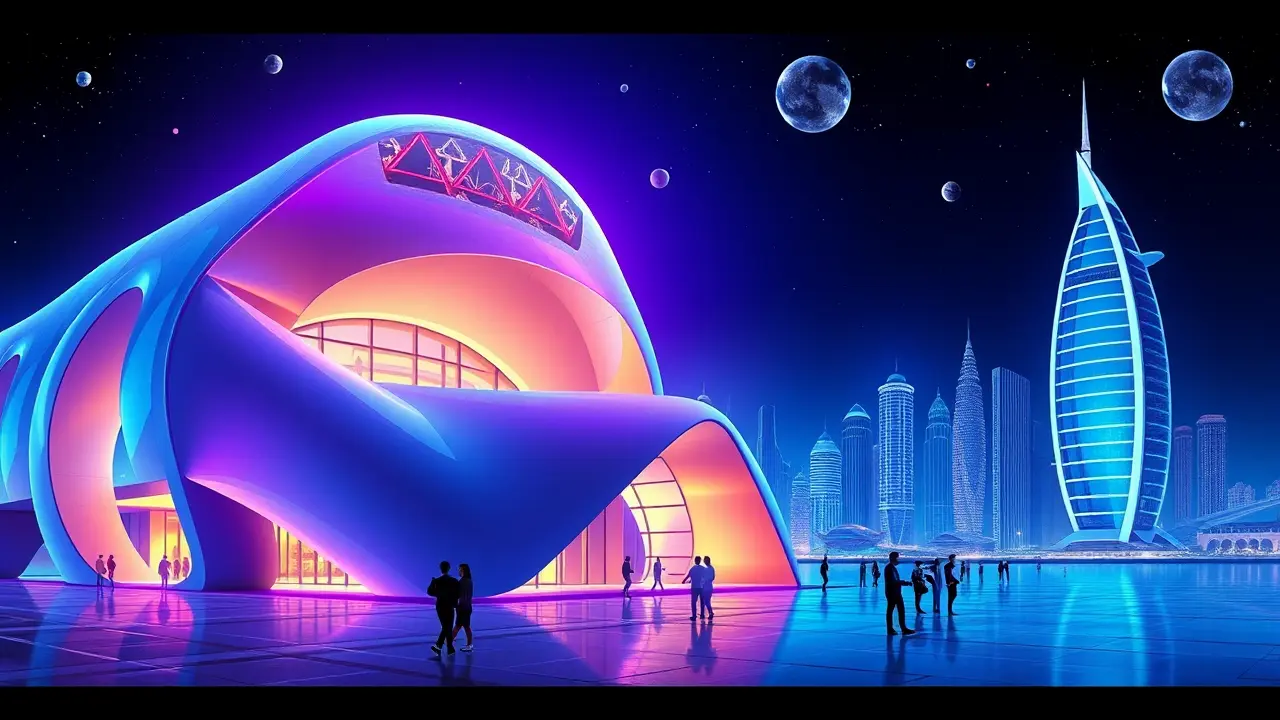
Entertainmenttheatre & artsArt Exhibitions
Qatar's Art Market Tested by New Art Basel Partnership.
LI
Lily Harper
1 day ago7 min read
The glitterati of the art world are buzzing with the kind of electric anticipation usually reserved for a major celebrity wedding or a surprise album drop, as Qatar, the Gulf's gilded powerhouse, makes another audacious play for cultural supremacy. Forget the whispers; this is a full-throated declaration, a strategic masterstroke that sees the nation launching a brand-new quadrennial event, a move that significantly amplifies its already formidable international portfolio, which now includes the crown jewel of art fairs, Art Basel Qatar, and a perpetually talked-about pavilion at the venerable Venice Biennale.It’s a power move worthy of a red-carpet reveal, but beneath the dazzling surface of this cultural coup lies a multi-billion-dollar question, the kind that has dealers and collectors from Doha to New York leaning in over champagne flutes: can this sun-drenched nation, with its bottomless sovereign wealth and architectural marvels, actually cultivate a self-sustaining, organic art *market* to match its monumental ambitions? The partnership with Art Basel isn't just a sponsorship; it's a seal of approval from the art world's most exclusive club, a signal to the global elite that Qatar is not merely a spectator but a central player on the main stage. This is a story of transformation, a narrative arc fit for a blockbuster, tracing the journey of a nation once known primarily for its energy reserves now pivoting with breathtaking speed to become a custodian of culture, using art as its primary currency of soft power in a geopolitically complex region.The stage was set over a decade ago with the visionary establishment of Qatar Museums under the formidable leadership of Sheikha Al Mayassa bint Hamad bin Khalifa Al Thani, a figure whose influence in the art world rivals that of any Hollywood mogul, orchestrating acquisitions of masterpieces by Cézanne, Rothko, and Hirst for sums that regularly shattered records and sent shockwaves through auction houses. These weren't just purchases; they were strategic declarations, the building blocks of a world-class institutional ecosystem that now includes I.M. Pei's breathtaking Museum of Islamic Art and the Jean Nouvel-designed National Museum of Qatar, architectural statements as bold as the art they house.Yet, acquiring a collection is one thing; fostering a living, breathing market ecosystem is an entirely different challenge, a marathon requiring not just capital but a deep-seated cultural infrastructure of local galleries, a robust collector base beyond the royal family, homegrown artistic talent, and a vibrant critical discourse that can survive without state sponsorship. The introduction of a quadrennial, timed to create a rhythmic, global spotlight every four years, is a genius stroke of event planning, designed to create a sustained rhythm of international attention, much like the Olympic Games or the World Cup, which Qatar has already proven it can host on a spectacular scale.However, the art market is a fickle beast, driven as much by perception and intangible value as by aesthetic merit, and the true test will be whether the excitement generated by these glittering events can translate into a consistent, year-round commercial vitality that empowers local galleries and artists. The parallels to other emerging markets are both instructive and cautionary; look at the explosive growth of the art scene in Hong Kong, which leveraged its free-port status and strategic location to become a dominant hub in Asia, but also required decades of development and a deep integration with international finance.Conversely, the story of Dubai, a neighbor and friendly rival, offers a compelling case study in rapid market creation, yet its scene still grapples with perceptions of being a transient marketplace rather than a cultural bedrock. For Qatar, the path forward is uniquely its own, leveraging its immense sovereign wealth through the Qatar Investment Authority to potentially create financial instruments and incentives that could attract art as an asset class, while simultaneously nurturing the grassroots—the art schools, the critical writing, the local patrons—that form the soul of any lasting art scene.The presence of Art Basel is the ultimate validator, a brand that brings with it a global network of blue-chip galleries, ultra-high-net-worth collectors, and a media spotlight that can anoint a new destination overnight. But the question remains: will the international jet-set, who flock to Basel, Miami, and Hong Kong, make Doha a permanent stop on their calendar, or will it remain a spectacular, state-driven biennial event? The answer may lie in Qatar's ability to tell a story that is uniquely Qatari, one that moves beyond importing culture to exporting a new narrative rooted in its own identity, a fusion of its deep Bedouin heritage with its hyper-modern present.The potential ripple effects are enormous, from boosting tourism and luxury real estate to repositioning the nation's global brand for a post-hydrocarbon future, a long-term vision that views art not as a luxury but as a strategic imperative. As the world watches this grand experiment unfold under the desert sun, one thing is certain: the stakes are as high as the ceilings in its world-class museums, and the outcome will redefine not just Qatar's cultural landscape, but the very map of the global art world for decades to come.
#Qatar
#Art Basel
#art market
#international art
#cultural events
#featured
Stay Informed. Act Smarter.
Get weekly highlights, major headlines, and expert insights — then put your knowledge to work in our live prediction markets.
© 2025 Outpoll Service LTD. All rights reserved.